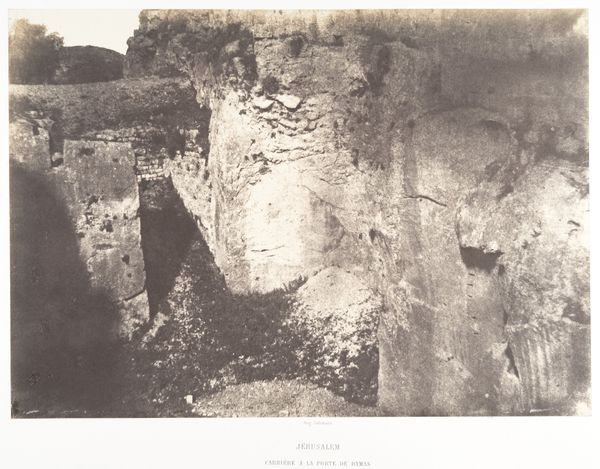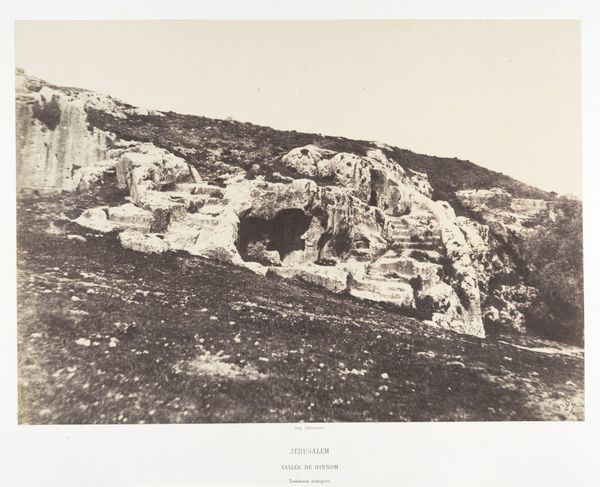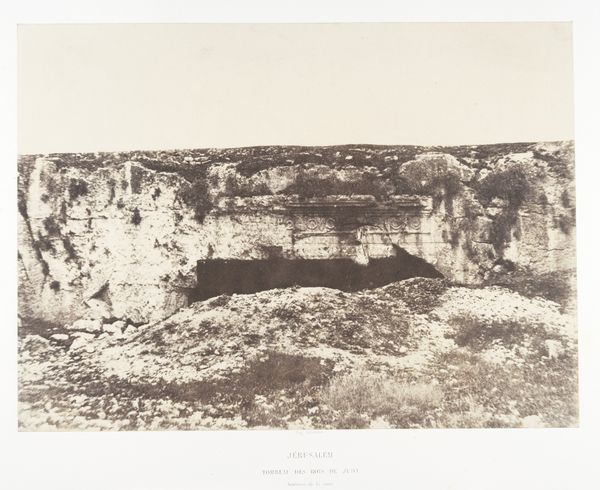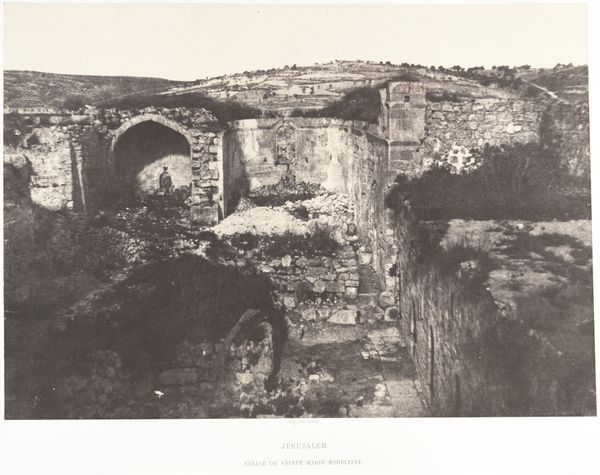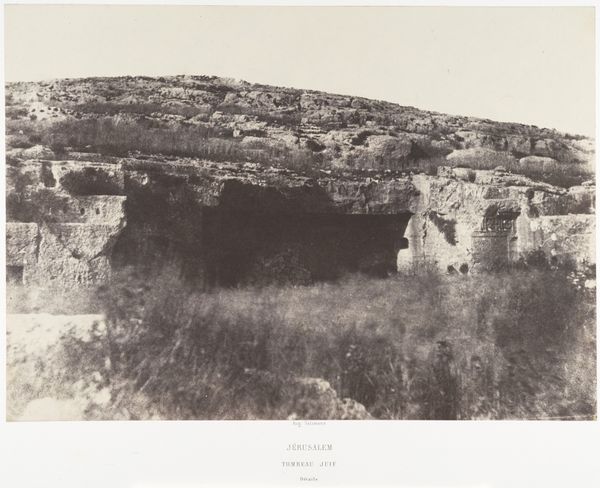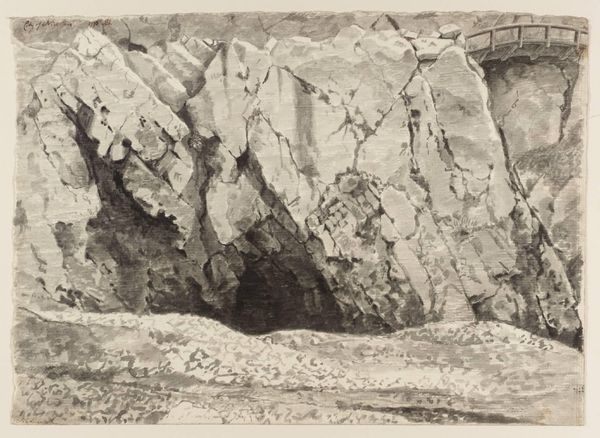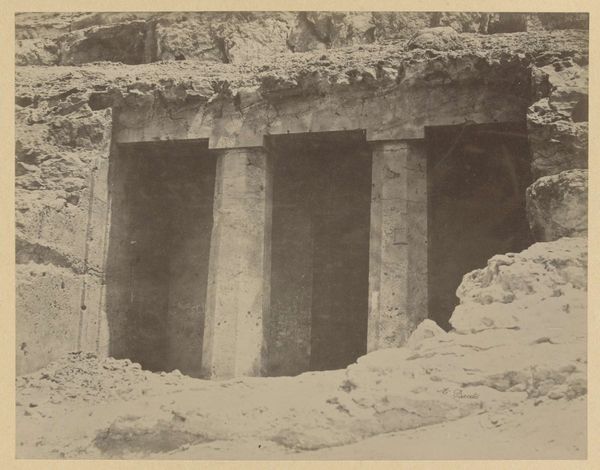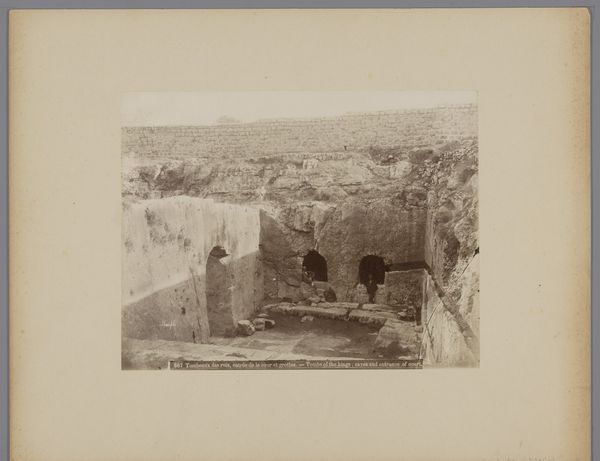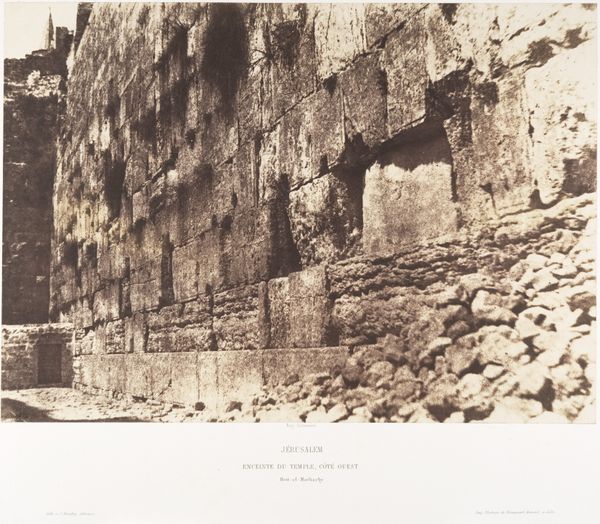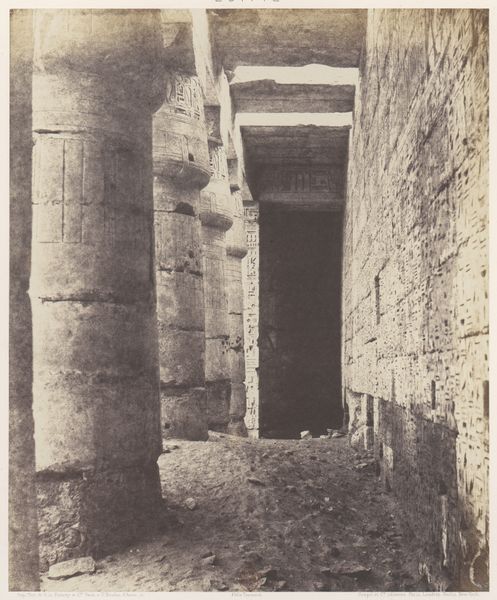
Jérusalem, Vallée de Hinnom, Retraite des Apôtres 1854 - 1859
0:00
0:00
photography, gelatin-silver-print, architecture
#
landscape
#
photography
#
ancient-mediterranean
#
gelatin-silver-print
#
architecture
Dimensions: Image: 23.5 x 32.8 cm (9 1/4 x 12 15/16 in.) Mount: 44.8 x 59.7 cm (17 5/8 x 23 1/2 in.)
Copyright: Public Domain
Curator: Auguste Salzmann's photograph, "Jerusalem, Valley of Hinnom, Retreat of the Apostles," captured between 1854 and 1859, invites us to consider the intersection of faith, place, and photographic representation. The piece is rendered in gelatin silver print and is a stark yet evocative landscape image. Editor: My immediate reaction is one of somber contemplation. The dark cavern, presumably carved into the rock face, exudes a quiet, almost eerie feeling, making one think of historical oppression and the search for refuge. Curator: Salzmann's choice to photograph the Holy Land was, in part, politically motivated, reflecting European interests in the region during the mid-19th century. His architectural studies contributed to contemporary debates about religious history, providing a new objective perspective, through photography. Editor: "Objective" is doing a lot of work there, don't you think? The photograph inevitably participates in a Western gaze, framing a specific narrative around religious heritage, maybe emphasizing the visual for the benefits of consumption by Europeans and white Americans? Whose apostles are we talking about and what’s the political positionality implicit in emphasizing their retreat? Curator: While I acknowledge the inherent biases in the Western perspective, Salzmann’s photographs provided, for many, direct visual access to sites previously known only through text and imagination, impacting European understandings of biblical history and archaeological exploration in the region. The gelatin-silver print adds an element of timelessness. Editor: Yet, this “timelessness” is constructed through both the photographic process and the framing of the subject. We're seeing not just a place, but a claim about history, power, and religious authenticity—especially within the context of colonialism. It prompts a discourse about how these spaces are viewed, valued, and ultimately, controlled. Curator: Understanding these intertwined cultural, political, and historical contexts is precisely why his work continues to resonate, albeit with necessary critical interrogation. This print stands not just as a historical record but also a document embedded within larger debates. Editor: Right. So, the work is compelling not merely for what it shows but for what it makes us question. About power, representation, and the enduring impact of a single image within much broader cultural narratives.
Comments
No comments
Be the first to comment and join the conversation on the ultimate creative platform.

